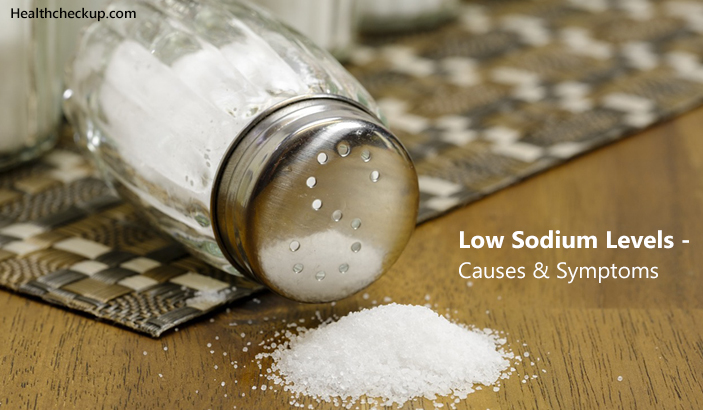Low sodium levels are often seen among the elderly, but among other age groups as well. There is the problem of the critically low sodium levels being caused by many different reasons, including a number of health diseases and/or disorders. But why is it so important to maintain a good balance within your sodium levels in the body? Let’s explore what dangerously low sodium levels actually mean and why is it important to ask for help in time.
What Are Low Sodium Levels?
Sodium is one of the many important electrolytes in the body. It has many vital functions, including maintaining a healthy water balance in and around the cells, proper muscle function, proper nerve function, stable blood pressure levels, etc. It is of vital importance to maintain a good balance within the sodium levels in our body. Critically low sodium levels in the blood is also referred to as hyponatremia. Hyponatremia happens whenever there is an imbalance between the water and the sodium levels in the body. In healthy adults, what is considered to be normal sodium levels is anything between 135 and 145 mEq/L. Anything below 135 mEq/L is labeled as hyponatremia.
Causes Of Low Sodium Levels
There is a long list of possible causes that can lead to dangerously low sodium levels. Many of these causes are underlying medical issues, as well.
Here are some of the most common causes of low sodium levels;
- Vomiting
- Diarrhea
- Using certain medications such as diuretics, antidepressants, etc.
- Dehydration
- Syndrome of inappropriate antidiuretic hormone secretion (SIADH)
- Kidney disease
- Liver disease
- Heart failure
- Hypothyroidism etc.
What Causes Low Sodium Levels In The Elderly?
One of the common risk factors for dangerously low sodium levels is old age. Low sodium levels are often seen among the elderly, especially within those who are living in long-term facilities or staying at the hospital for any health-related reason. The reason for that is because a lot of the times, we see the risk factors and causes that we mentioned earlier among the elderly. They are known to struggle more with these health problems as compared to younger adults. In addition, the elderly are also often prescribed the medications that we also listed as common risk factors for the decline of the sodium levels in the body.
What Are The Symptoms of Low Sodium Levels?
Each hyponatremia case seems to be different. Some people experience mild symptoms, whereas some tend to experience the most severe form of symptoms. When the sodium levels are falling gradually, most patients experience mild symptoms that they usually do not consult their doctors about.
The list of most common low sodium levels symptoms includes;
- Nausea and vomiting
- Headaches
- Fatigue
- Muscle cramps
- Confusion
- Irritability
Among the elderly, the most common symptoms include lethargy, altered personality, and confusion. The most severe cases of low sodium levels can be linked to seizures, coma, and even death.
How To Increase Low Sodium Levels?
The treatment for critically low sodium levels usually includes reducing the fluid intake, treating the symptoms themselves, and adjusting the dosage of diuretics or any other medications that might be causing the symptoms in the first place. If there is an underlying cause, the focus of the treatment would be to eliminate it, and with that, balance the sodium levels in the body as well.
What Foods Are Good For Low Sodium Levels?
You can also act to improve your sodium levels by improving your diet and eating certain foods that are considered to have a positive impact on your sodium blood levels!
Try eating more of the following foods that are high in sodium;
- Salter butter or margarine
- Olives
- Sauerkraut
- Bread
- Pasta
- Rice
- Cottage cheese
- Salted nuts etc
In addition, reduce your caffeine intake and alcohol intake. Salt tablets can be used as well but only after a consultation with a proper healthcare provider.
Conclusion
Low sodium levels, left untreated can lead to seizures, coma, and potential death. Its symptoms vary from person to person and can be mild or more severe. It represents a medical issue that can be caused by a long list of factors, and it is one that is most common within the elderly. The treatment for low sodium levels seems simple enough, and its principles are easily incorporated into one’s lifestyle. For any underlying condition that has been listed as the cause for the lower than normal sodium levels, proper treatment is required.
Doctor, author and fitness enthusiast, Ahmed Zayed, MD, is a surgery resident with a passion for helping people live a happy healthy life. He is the author of numerous health-related books and contributor to several medicine, health and wellbeing websites.








